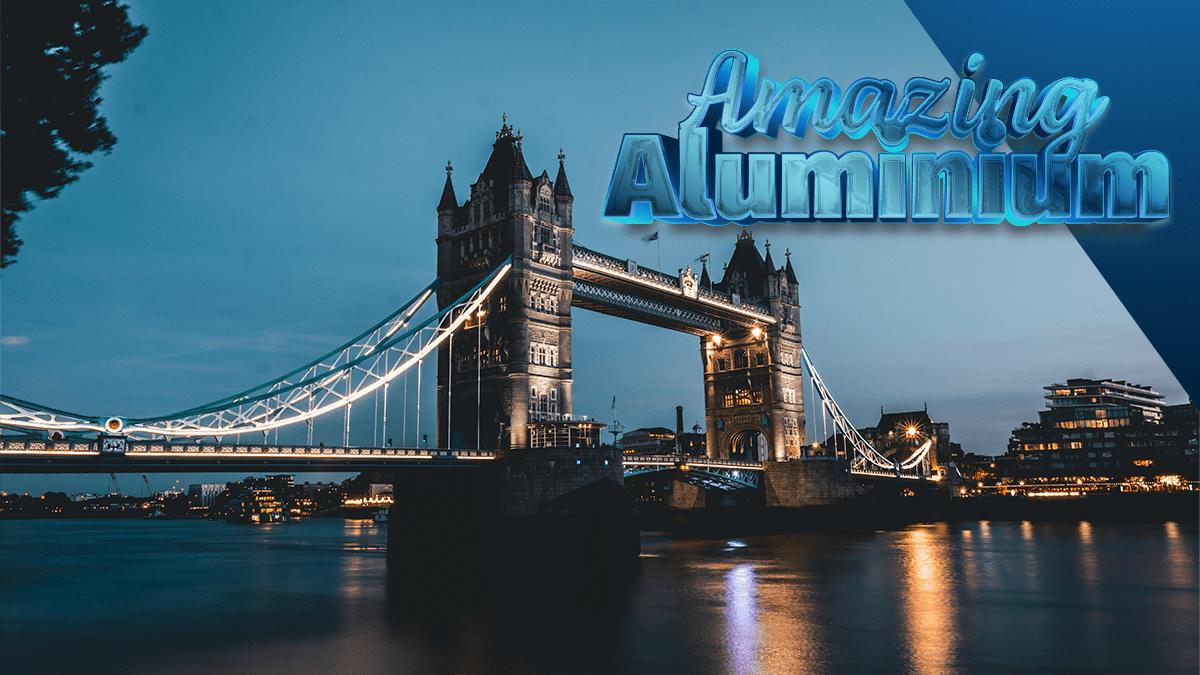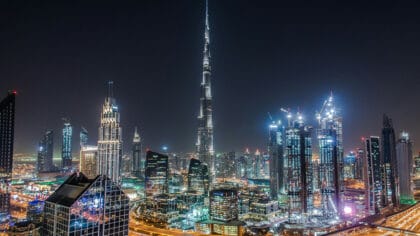
This is the London Aquatics Centre in the Queen Elizabeth Olympic Park in Stratford. It was designed by a female architect called Zahar Hadid for the London 2012 Olympic and Paralympic Games. It was where they held the swimming, diving and synchronised swimming events.
The roof is like a huge wave. It’s an amazing shape. See how shiny the roof is? That’s because it’s made of aluminium.
Aluminium is an ideal building material because of its flexibility and how it helps buildings to be energy efficient. Almost a fifth of all aluminium used in Europe is used in construction – a figure that’s expected to increase as more and more innovative applications are developed.
Another iconic building that used aluminium to create a dramatic shape is the art deco-inspired Empire State Building in New York – it was built way back in the 1930s.
Embed from Getty ImagesAluminium has provided many cities with their modern appearance. Aluminium sheets and panels can be manufactured flat, curved and sandwiched with other materials. It can also be cast to virtually any shape, offering huge design possibilities – so you can have a swooping wave like the Aquatics Centre…or a soaring peak that stretches into the sky!
And whatever you choose, it’ll stand the test of time – like the Empire State building.
Aluminium building products are made from alloys that are weatherproof, corrosion-resistant and immune to UV rays. These help ensure performance is maintained for long periods of time.

Did you know you can recycle a BUILDING?
It’s really important to recycle building waste. A THIRD of all the waste in our country comes from construction and demolition. Over 100 MILLION tonnes, in fact!
The first step is to separate the rubble into its core component – metals, bricks, plastic and other materials. The metals are then separated in their respective types – steel, iron, aluminium…
As there are various types of aluminium – each made in a different way and having different properties, the waste aluminium is separated into groups. They can then be recycled or re-used according to their group.

Some of the aluminium is separated and used in other structures. But most is destined for the recycling plant. Recycling uses just 5% of the energy needed to make aluminium from scratch!
As aluminium might be just a component in things like window frames alongside other materials, the metals are heated to burn off any plastics or adhesives that may be stuck on.
This is a process that has to be done VERY carefully to minimise any dangerous emissions. It can also be smelly.
The scrap is then broken down by cutting or crushing it. To ensure that it is just aluminium that is being re-processed, magnets are used to pick out any magnetic metals, which will be recycled in a different way. The waste metals can also be sorted by weight and even by hand.
The waste aluminium is then melted down and formed into ingots which are sent to factories to be turned back into almost anything – from household goods like kitchen foil and drink cans to the foundations and frame-structures for new homes, office blocks and sports stadiums.

Many valuable materials end up in a landfill. Most can still be reused in some way. Below is a list of the most common building materials and their uses after the recycling process:
- Glass – used for different purposes including the manufacture of concrete and insulation;
- Wood – mainly recycled for the creation of energy;
- Bricks, concrete and stones – the materials are crushed and used to produce new asphalt and concrete;
- Metal – once recycled, the metal can be re-used in any metal product! Recycling metal is much more energy efficient than creating new metal from raw materials.
Recycling waste building materials minimises the cost of construction projects, decreases the amount of waste sent to landfills, and also helps the environment.
Why not design a futuristic building in a unique new shape? Have a look at the buildings where you live and see if you can identify the different materials used, such as wood, brick and metal. And see if the building’s age gives any clues to the materials used.
Click here for some amazing free aluminium education resources!
And remember to always recycle your aluminium – whether a drink can or foil tray, foil wrapping or bottle cap – always put your aluminium into your recycling. After all, aluminium is infinitely recyclable.
AMAZING ALUMINIUM – WITH SUPPORT FROM ALUPRO

Amazing Aluminium
Aluminium is amazing! It's so versatile. Find out all about how amazing aluminium is in our amazing series, Amazing Aluminium!
More From Amazing Aluminium






